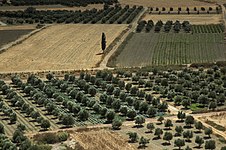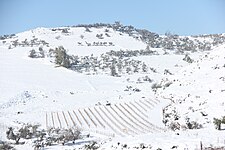Piraea
This article is incomplete because it is pending further input from participants, or it is a work-in-progress by one author. Please comment on this article's talk page to share your input, comments and questions. Note: To contribute to this article, you may need to seek help from the author(s) of this page. |
Piraean Republic Πειραιηκή Δημοκρατία Pireikí Dimokratía (Piraese) | |
|---|---|
Anthem: "Ύμνος προς την Ελευθερίαν" "The Homeland" | |
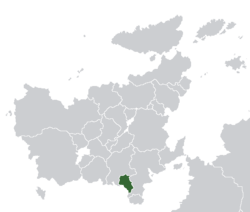 Piraea (dark green) in Euclea (dark grey). | |
| Capital and largest city | |
| Official languages | Piraese |
| Recognised regional languages | Novalian |
| Ethnic groups (2015) | |
| Demonym(s) | Piraean, Piraese |
| Government | Unitary parliamentary republic |
| Pavlos Kassapidis Stella Davakis Stefanos Xanthos | |
• Premier | Maria Theopeftatou |
| Legislature | Piraean Senate |
| Establishment | |
• 1st Piraean Empire | 639 - 884 |
• 2nd Piraean Empire | 1012 - 1368 |
• Grand Duchy of Alikianos | 1729 |
• Kingdom of the Piraese | 1857 |
• First Republic | 1947 |
• Second Republic | 1948 |
• Third Republic | 1979 |
| Population | |
• 2019 estimate | |
• 2017 census | 7,484,889 |
• Density | 86/km2 (222.7/sq mi) |
| GDP (PPP) | 2019 estimate |
• Total | $207.062 billion |
• Per capita | $27,664 |
| GDP (nominal) | 2019 estimate |
• Total | $113.299 billion |
• Per capita | $15,137 |
| Gini (2020) | low |
| HDI (2020) | very high |
| Currency | Drachma (₯) (PRD) |
| Time zone | Euclean Central Time |
| Date format | dd-mm-yy |
| Driving side | right |
| Calling code | +42 |
| Internet TLD | .pr |
Piraea (Pireás: Πειραεάς, tr. Peiraeás), officially the Piraean Republic (Pireás: Πειραεηκή Δημοκρατία, tr. Piraeikí Dimokratía) is a country in Southern Euclea located along the Acheloian Sea. It borders Amathia to the north, Etruria to the east and the disputed territory of Tarpeia to the south. Piraea has a population of approximately 7.4 million, which are concentrated in urban areas along the coast. Alikianos is the capital and largest city of the country, and is followed by Kissamos, Hersonissos and Tylissos.
Piraea is recognised as one of the most civilisations in Euclea. Its presence along the Acheloian and Solarian Seas as well as in the Aurean Straits is well documented in numerous texts that highlight the greatest extent of the Piraese city-states along both sides of the strait. This form of political organisation was crucial for Piraea in the development of the first forms of democracy and innumerable mathematical advances. However, between the year 300 and 200 BCE, city-states will progressively fall under Solarian influence, with the fall of Alikianos marking the end of the period. The previous developments that characterised Piraese city-states were later used as inspiration during the Solarian period in a moment of massive advances in philosophy and arts. The collapse of Solaria in hands of Marolevic tribes pushed Piraea to form the First Piraean Empire, which collapsed centuries later during the invasion of the Tagames. Piraese control over the territory was re-established under the Second Piraean Empire, although short living as internal turmoil and a lack of national identity took it to the collapse, initiating a period of foreign control of Piraea by Amathian, Novelian and Poveglian authorities.
In 1820, under the control of the Kingdom of Vespasia, ethnic Pirese joined in what is known as the October Uprising, which led to a War of Independence that lasted five years and proved effective in building a national narrative for Piraese identity. The revolution will last until 1925, when diplomatic intervention of Euclean powers concluded with the effective establishment of the Kingdom of Piraea. At the burst of the Great War, Piraea joined the Entente, declaring its support to Gaullica and declaring war on Etruria; however, the country got immersed in a series of internal conflicts that questioned the continuity of the monarchy. The defeat of the Entente and Piraea at the end of the war took the Kingdom to hand in Tarpeia to Etruria; this will take the popularity of the monarchy to the lowest and mark the start of a civil war that concluded a year later with the abdication and exile of the Royal Family. During the following years, Piraea will be under the control of an authoritarian military junta of far-right characteristics until 1979, when students and workers' massive protests took the government to pursue a consolidation of the regime through the vote of a plebiscite; the negative of the population concluded with the celebration of the first democratic elections and the start of a transition period.
Today, Piraea is a unitary parliamentary republic and developed country with a high standard of living. It is led by a collective Presidency composed by three members and a Premier, who acts as Head of Government. The economy is dominated by the service and industrial sectors, and counts with large contributions from the agriculture sector, in which Piraea is a leading exporter of cheese, olive oil and wines. The state provides social security and universal health care systems in addition to tuition-free primary and secondary education; corruption still plays a role in politics and has downgraded Piraea's status in numerous rankings. The country is a member of the Community of Nations, International Council for Democracy, Euclean Defence Treaty Organisation, Global Institute for Fiscal Affairs, and the International Trade Organisation; as of 2021, the country has formalised its intentions to be a member state of the Euclean Community and is a recognised candidate.
Etymology
The name Piraea comes from the Ancient Piraese name Πειραιεύς (Peiraieús), which roughly means 'the place over the passage'. Over time the Ancient Piraese evolved into the modern Πειραιάς (Piraeus). Piraea is the embricized version of Piraeus.
History
Classical period
Solarian rule (300 BCE-500 AD)
Middle Ages and Empires (500 AD-1368)
Duchy of Alikianos and Kingdom of Piraea (1729-1857)
Industrialisation and Great War (20th century)
First Republic (1947-1948)
Military rule (1948-1979)
Third Republic and contemporary history (1979-present)
Geography
Politics and government
Piraea is a unitary parliamentary republic, which is constituted in the 1979 Constitution of the Third Republic. Exective power is divided between the Head of State and a Head of Government; the first is consolidated in the collective figure of the Presidency, while the second, consists in the figure of Premier, who is appointed by the Chairperson of the Presidency after gaining the confidence of the legislature. As a secular nation, the constitution recognises the preponderant position of the Episemialist Church but grants the state protection of religious freedom; Piraea's constitution recognises important civil and Human Rights, freedom of speech and expression, and the adoption of a social state.
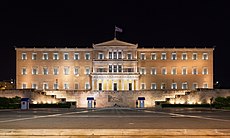
The members of the Presidency are elected via universal suffrage and seats allocated between two for the party with the most votes and one for the second; as members of the Presidency are conceived as independent and non-partisans, Piraese political tradition requires them to resign to their places in their respective political parties. The three members serve for six years and their positions can be renewed one more time. While there is no higher position than the Presidency and the three members count with equal power, a ceremonial chairperson title for two years by each member. The figure of Head of Government, impersonated in the Premier, is appointed by the Presidency after gaining the confidence of the Senate; usually, nominees for the Premiership are party leaders of the most voted parties after general elections take place. The figure of Premier is who usually leads daily politics in Piraea, recommends members to the cabinet and drafts policy to be enacted. Premiers do not have a fixed term lengh, although legislatures usually mark their end four years later after their appointment.
The legislative power of Piraea is vested on the unicameral Piraean Senate, a legislature comprised of 125 members elected every four years through universal suffrage. The parliamentary culture of Piraea is rooted in the principle of "δεδηλωμένη" (dedilomeni) or "declared confidence" to whoever is nominated as Premier; the importance of the Members of the Senate is exemplified in their decision to grant or not confidence to the Head of Government and can call individual or the whole cabinet to resign, forcing general elections, if a motion of censure achieves the needed majority. The legislature is also tasked with passing laws, supervising the executive and declaring war, among other things. According to the Constitution of the Third Piraese Republic, the judicial branch is divided between civil and administrative courts, with the former dealing with ordinary civil and criminal matters and the former with issues regarding institutional competences or individual cases of disputes between the state and citizens, among others. The judicial system is hierarchically structured, with courts of general jurisdiction on first instances and a Supreme Court of Piraea on top of them, below it, both the civil and administrative courts count with their respective Supreme Courts; when contradictory decisions or disputes between the two arise, the Supreme Court of Piraea is in charge of providing an irrevocable statement.
After the return of democracy, the Piraese political world has been dominated by the Piraese Socialist Workers Union (centre-left) and the People's Party (centre-right), which have alternated in power. Minor parties exist and their presence is crucial in the creation of coalitions, which have been needed in all legislatures due to the proportial representation system.
Foreign relations

Piraean relations have been constrained to its national political past and geopolitical location in the south of Euclea. Over the years, it has shifted its main foreign policy axis, gaining pragmatism that has given it a wide range of nations with which it holds friendly close relations. During the military junta period, Piraea saw an important alignment with other authoritarian and nationalist regimes, like ASUR; however, during the final years of the dictatorship, Piraea's junta was immersed in a state of isolationism in the Euclean scenario. The return of democracy took it to explore a gradual approach with the Euclean Community after an initial failed attempt to gain access to the bloc; during successive socialist governments, the country became gradually aligned with the socialist world and became an observer of the Association of Emerging Socialist Economies and the Association for International Socialism; although it was never considered a member of any of the two, Piraea still holds close ties with Kirenia and Champania.
Since 2008, the most important political parties have reached consensus about the path of accession to the Euclean Community and Piraea has already held talks with communitarian authorities, being recognised as a candidate. In ____, it was allowed to become a member of the Euclean Common Defense Treaty Organization and the country aims to become part of the EC by 2024, although a persistent but isolated eucloscepticism and the need of institutional reforms might delay the date. The country's claims over Tarpeia have long been an obstacle on the relations with neighbouring Etruria, with which Piraea still holds fraught relations. The country is a founding member of the Community of Nations and has an active participation as full member of the International Council for Democracy, the Euclean Defence Treaty Organisation, the Global Institute for Fiscal Affairs, and the International Trade Organisation.
Administrative divisions
Military
Law enforcement
Economy
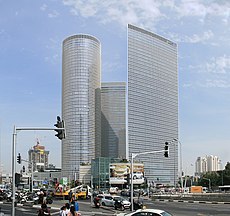
Piraea is a developed and high-income economy, with a high standard of living, although still behind other Euclean nations. The country has a GDP (PPP) of $207.062 billion and a per capita of $27,664, it also ranks very high in Human Development Index (0.870) and has a comparably low social inequality according to the Gini index (29.7). Piraeans count with a large welfare net built over the years and the country has developed a high rate of home ownership between the 1970s and 80s; however, the country has a high unemployment rate (15.5% as reported in 2020) and an even higher rate of youth unemployent (33.7% recorded the same year).

The services sector comprises the majority of the Piraean Gross Domestic Product, accounting for a 79.1% of its total output. The sector has a large contribution from tourism, a crucial industry in most Piraean regions, which usually rank among the most visited spots in the Euclean continent; on average years, Piraea approximately welcomes between 14.7 and 19.4 million tourists, mainly from Werania, Estmere, Gaullica, Amathia and Etruria; retail is also considered crucial in the tertiary sector and Piraea counts with numerous retailers that have achieved Euclean presence. Although with a small international projection, the services sector are also see the contributions of a large financial sector, which is mainly focused in Alikianos, and counts with an important presence of the state through regional saving banks that are considered pillars of welfare state. The secondary sector, which accounts for 16.9%, consists on the production of cement, marble and aluminium, as well as a developed chemical industry; shipbuilding, mainly for commercial purposes, is also very important and accounts for a large part of the sector's output. Smaller in comparison but highly profitable, the primary sector of the economy accounts for 4.1% of Piraea's output, but employs 12.6% of the total workforce; the country is a leading exporter in the continent of pistachios, diary products, olives and oils, and several types of fruits and vegetables. The wine industry, one of the largest in the south of Euclea, has been upgraded and is protected nationally.
Piraea is considered to be a welfare state, with extensive social programs and a robust pension system; although severely damaged from budget cuts during the early 2000s and after the 2005 global recession, Piraean governments have achieved to effectively modernise most the welfare state. Although heavily liberalised during the first portion of the millennium through privatisations, Piraea's economy is characterised by a large number of cooperatives functioning on different sectors of the economy.
Labour market

The Piraese labour market has undergone several reforms since the 1990s aimed to make it flexible for both employers and employees and in order to cope with Euclean Community standards. Although the country is considered a developed and high income economy, it faces the struggles of high unemployment rates and a low purchasing power, these factors place Piraese workers with a high average number of working hours. Geographically, unemployment tends to increase in inland regions, which contrast with the coastal reality; similarly, summer season tends to decrease unemployment, especially among the youth. Since 2005, Piraea has introduced temporary layoffs as part of the measures to diminish the impact of the global recession that same year. The Piraese labour market stands out in the region by its small income inequality, often attributed to the proliferation of cooperatives in different sectors.
Piraea counts with an average trade union density (20.8% of the total workforce) and a very high collective agreement coverage (100% in 2020), this gives the main trade union, the General Confederation of Piraese Workers (ΓΣΕΠ), an enormous influence in society and politics. The country has a robust welfare state and spends 23.7% of its total GDP in social welfare spending, mostly directed to support the social security and universal healthcare systems. Tertiary education attainment ranks high when compared in South Euclea but lags behind other Euclean nations, standing between 25% and 30% depending on different age gaps.
Transport and infrastructure

During the late 1970s and 1980s, Piraea underwent several modernisations on its road networks and transport capacity aimed to put the country on a comparable state with its other Euclean counterparts. The country has a well expanded and robust motorways (Αυτοκινητόδρομοι) and national roads (Εθνικές Οδοί) network, which are connected to neighbouring Amathia and Etruria in different points and provides the country with easy links; most of these tend to be concentrated in the metropolitan area of Alikianos, the Souda Riviera and Sitia, where the most populated centres are found. Major motorways in Piraea are usually privately managed through concessions. The axis of the network is usually attributed to the A1 and A2, which from Alikianos, connect both the eastern and western regions and are part of the Euclean road network.
Piraea's railway network is sufficiently expanded through the territory, and the largest cities have efficient intra-urban connections. From Alikianos Kentro, and connected with the rest of the continent via Amathia, Piraea has an electrified high-speed railway network operated by Trena Piraea, in which FS Class ETR 480s average velocities of 250 km/h (140 mph). Piraea is serviced by two international airports, the Ioannis Apostolou International Airport in Alikanos and the Hersonissos-Salicea Airport; Alikianos is the largest and busiest of the country, having handled in 2020 some 24.8 million passengers, and is considered a crucial airport in the South Euclea region. Hersonissos-Salicea offers mostly seasonal services during summer to Rahelian and Euclean destinations. Nevertheless, the country is well connected with most of Euclea and Coius; Piraea's flag-carrier, _, is the largest airline and counts with several destinations across the region from its hub airport in Alikianos.
Energy
Demographics
Religion
Largest cities
| Rank | Name | Province | Pop. | ||||||
|---|---|---|---|---|---|---|---|---|---|
 Alikianos  Kissamos |
1 | Alikianos | Souda Riviera | 1,380,508 |  Hersonissos  Tylissos | ||||
| 2 | Kissamos | Souda Riviera | 324,676 | ||||||
| 3 | Hersonissos | Sitia | 267,121 | ||||||
| 4 | Tylissos | Souda Riviera | 144,046 | ||||||
| 5 | Voula | Foinikas | 120,833 | ||||||
| 6 | Rouvas | Sitia | 96,157 | ||||||
| 7 | Gorgolainis | Foinikas | 82,921 | ||||||
| 8 | [[]] | [[]] | |||||||
| 9 | [[]] | [[]] | |||||||
| 10 | [[]] | [[]] | |||||||





